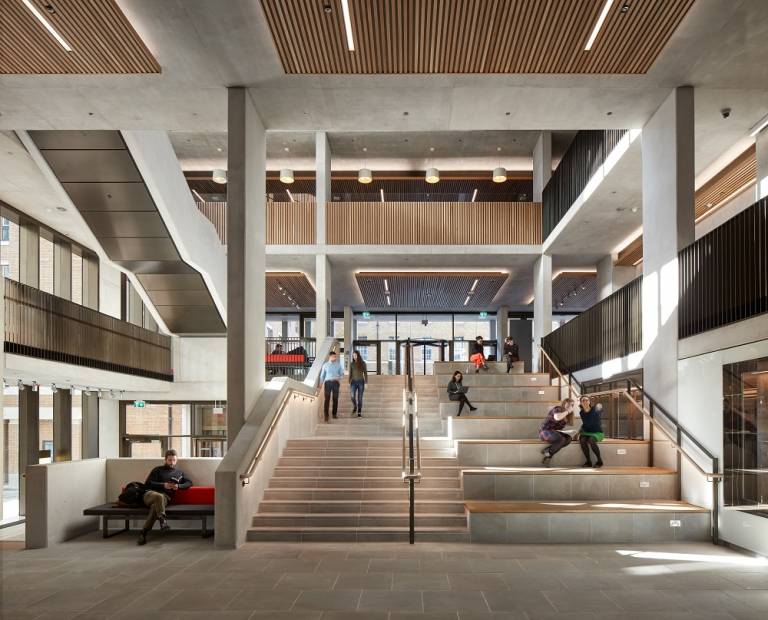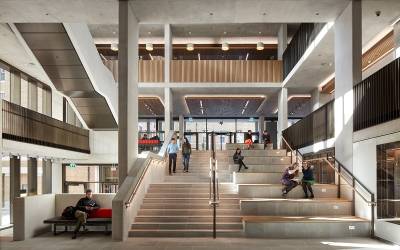The Student Centre - a flagship for sustainability
The new UCL Student Centre is a benchmark of excellence for all future UCL development projects. The project achieved the highest possible levels of environmental performance.

11 May 2021
Located on Gordon Street in the heart of UCL’s prestigious central campus, the New Student Centre provides a mix of learning spaces varying in character and size, creating different types of individual study and group collaboration settings, as well as more social learning environments. With 1000 new ‘study seats’, the building is focal point for university study and events.
Benchmark for excllence
The centre is a benchmark of excellence for all future UCL development projects. The high-quality design is responsive to change with flexible spaces and integrated technology and has been designed to utilise the latest sustainable technologies.
The building is also a flagship for sustainability at the University and the project team has achieved the highest possible levels of environmental performance. Going well beyond regulatory and planning requirements, an environmental assessment was carried out resulting in the highest possible BREEAM ‘Outstanding’ rating at final certification, a significant achievement matched by only a handful of buildings in the UK.
As well as reducing UCL’s environmental impact, key sustainability features also help to reduce running costs.
 Close
Close



